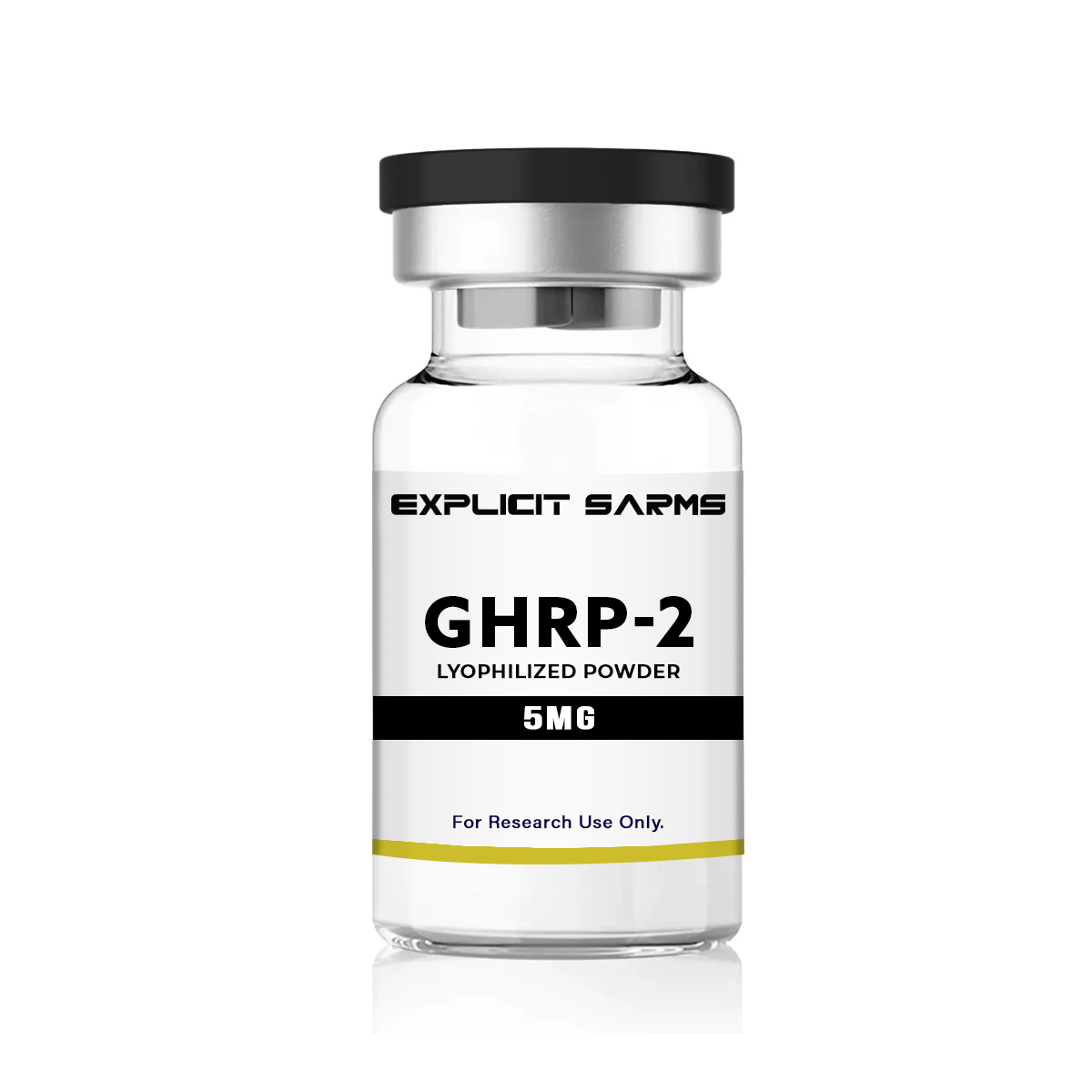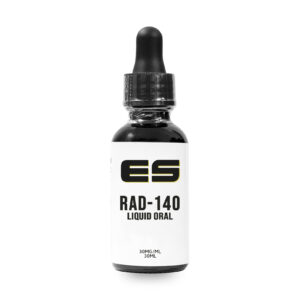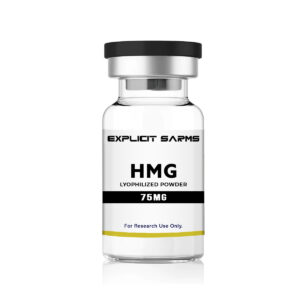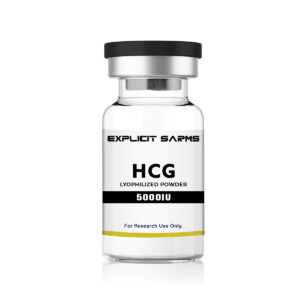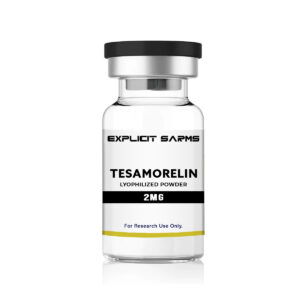5mg
1 vial
Molecular Formula: C45H55N9O6
What is GHRP-2?
Growth hormone-releasing peptide-2 (GHRP-2) is a synthetic analog of ghrelin, a gastrointestinal peptide that binds to the growth hormone secretagogue receptor (GHS-R). Ghrelin not only stimulates hunger but also enhances growth hormone release. Similarly, GHRP-2 activates GHS-R, triggering the release of growth hormone (GH). Both ghrelin and GHRP-2 also stimulate the secretion of prolactin, cortisol, and corticotropin from the anterior pituitary gland. Despite the chemical differences between natural ghrelin and GHRP-2, substantial evidence indicates that they exhibit similar biological actions as described above.
GHRP-2, consisting of 6 amino acids and having a molecular weight of 818 kDa, functions in two ways to elevate natural growth hormone levels. First, it amplifies the endogenous signal for growth hormone secretion by interacting with GHS-R, leading to significant growth hormone release. In a laboratory experiment, GHRP-2 demonstrated a notable increase in growth hormone release in mice carrying a genetic mutation in natural growth hormone-releasing hormone (GHRH). Second, GHRP-2 suppresses somatostatin, an inhibitor of growth hormone. Additionally, GHRP-2 has been shown to work in conjunction with the growth hormone-releasing factor (GRF) to stimulate growth hormone release from the pituitary gland in rats.
Animal and human studies have revealed various benefits of GHRP-2. It increases food intake, promotes muscle growth, enhances immunity, improves sleep quality, and may offer protective effects for the heart. Furthermore, GHRP-2 boosts the release of insulin-like growth factor I (IGF-I). In a study using a rat model of liver damage, intraperitoneal injection of GHRP-2 reduced tissue necrotic factor-alpha (TNF-α), indicating a potential role of GHRP-2 in inflammation modulation.
GHRP-2 serves as a valuable reagent for in vitro experiments due to its multifaceted effects. It is available in vials as a lyophilized powder (5 mg/vial). The contents of the vial can be reconstituted with an appropriate volume of sterile water for use in in vitro studies.
GHRP-2 Info Based off of Research
- Stimulation of Growth Hormone Release: GHRP-2 is known for its ability to stimulate the release of growth hormone (GH) from the pituitary gland. This increase in GH levels can have several potential benefits.
- Muscle Growth: Increased GH levels can support muscle growth and development, making it of interest to athletes and bodybuilders.
- Fat Loss: GHRP-2 may promote the breakdown of stored fat (lipolysis), potentially aiding in weight loss and improving body composition.
- Improved Sleep: Some users of GHRP-2 have reported improved sleep quality, including deeper and more restorative sleep.
- Enhanced Recovery: Athletes and individuals involved in strenuous physical activities may use GHRP-2 to aid in muscle recovery, reduce soreness, and improve overall recovery times.
- Anti-Aging Effects: GH is associated with anti-aging properties, including improved skin quality, reduced wrinkles, and increased vitality.
- Improved Bone Density: GHRP-2 may have the potential to improve bone density, which can be beneficial for bone health and reducing the risk of osteoporosis.
- Enhanced Mood and Cognitive Function: Some users have reported improved mood, mental clarity, and cognitive function with the use of GHRP-2.
- Immune System Support: Increased GH levels can support immune system function, potentially enhancing the body’s ability to fight off infections.
- Enhanced Libido and Sexual Function: Improved GH levels may positively influence libido and sexual function in both men and women.
- Cardiovascular Health: Some studies suggest that GH may have cardiovascular benefits, such as improved cholesterol profiles and reduced risk factors for heart disease.
- Wound Healing: GHRP-2 has been explored for its potential to enhance wound healing, including chronic wounds that are slow to heal.
Studies/Resources
Safety Disclaimer
This product is intended for research purposes only. It is not intended for human consumption or medical use.
